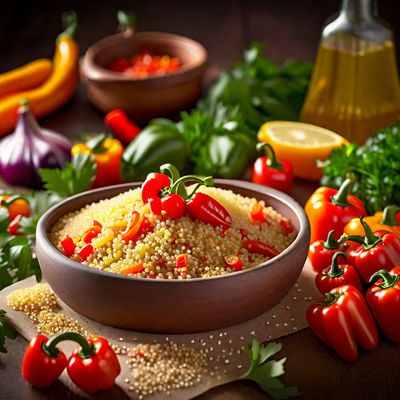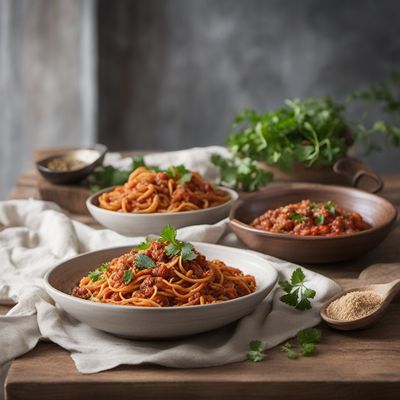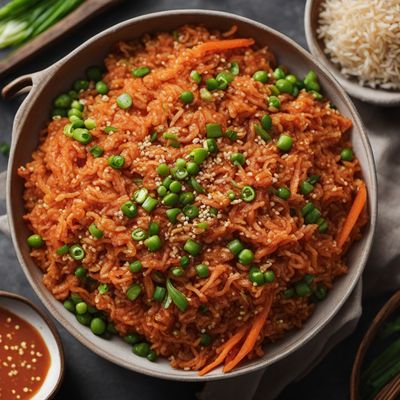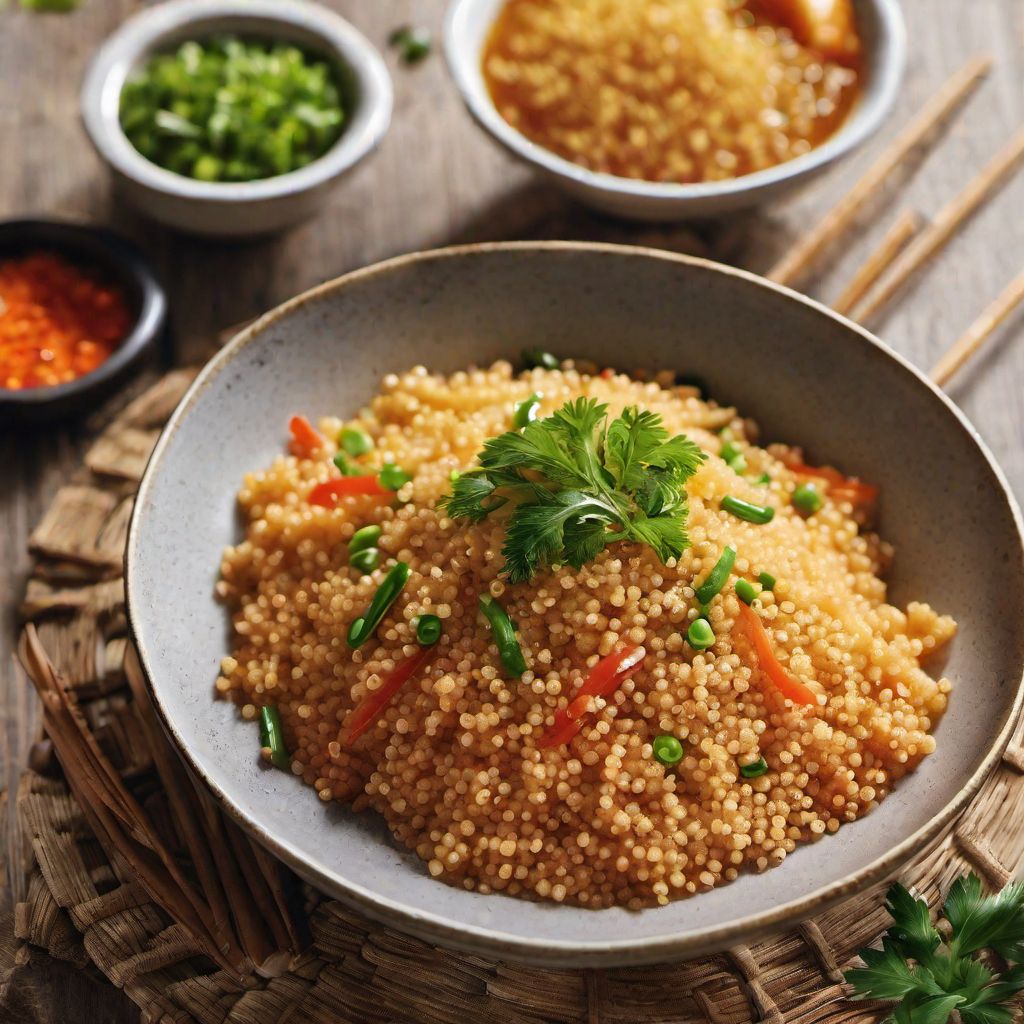
Recipe
Korean-style Couscous
Kimchi-infused Couscous with Gochujang Dressing
4.8 out of 5
In Korean cuisine, we have taken inspiration from the North African dish, couscous, and given it a unique Korean twist. This Korean-style couscous combines the flavors of traditional couscous with the bold and spicy flavors of Korean cuisine. The result is a delicious and satisfying dish that will delight your taste buds.
Metadata
Preparation time
15 minutes
Cooking time
5 minutes
Total time
20 minutes
Yields
4 servings
Preparation difficulty
Easy
Suitable for
Vegetarian, Vegan, Gluten-free (if using gluten-free couscous), Dairy-free, Nut-free
Allergens
Wheat (if using regular couscous), Soy (in the soy sauce)
Not suitable for
Paleo, Keto, Low-carb, High-protein, Low-fat
Ingredients
While the original North African couscous is typically made with semolina and served with a variety of vegetables and meats, our Korean adaptation incorporates Korean ingredients and flavors. We have added kimchi, a staple in Korean cuisine, to give the couscous a tangy and spicy kick. Additionally, we have created a gochujang dressing to drizzle over the couscous, adding a rich and savory element to the dish. We alse have the original recipe for Couscous (dish), so you can check it out.
-
2 cups (470ml) vegetable broth 2 cups (470ml) vegetable broth
-
1 cup (185g) couscous 1 cup (185g) couscous
-
1 cup (150g) kimchi, chopped 1 cup (150g) kimchi, chopped
-
1 tablespoon sesame oil 1 tablespoon sesame oil
-
2 tablespoons gochujang (Korean red pepper paste) 2 tablespoons gochujang (Korean red pepper paste)
-
1 tablespoon soy sauce 1 tablespoon soy sauce
-
1 tablespoon rice vinegar 1 tablespoon rice vinegar
-
1 tablespoon honey 1 tablespoon honey
-
1 cucumber, thinly sliced 1 cucumber, thinly sliced
-
2 green onions, chopped 2 green onions, chopped
-
1 tablespoon toasted sesame seeds 1 tablespoon toasted sesame seeds
Nutrition
- Calories: 250 kcal / 1046 KJ
- Fat: 5g (1g saturated)
- Carbohydrates: 45g (8g sugars)
- Protein: 7g
- Fiber: 4g
- Salt: 1g
Preparation
-
1.In a saucepan, bring the vegetable broth to a boil. Remove from heat and stir in the couscous. Cover and let it sit for 5 minutes until the couscous absorbs the liquid.
-
2.Fluff the couscous with a fork to separate the grains.
-
3.In a small bowl, whisk together the sesame oil, gochujang, soy sauce, rice vinegar, and honey to make the dressing.
-
4.In a large mixing bowl, combine the cooked couscous, chopped kimchi, cucumber slices, and green onions.
-
5.Pour the dressing over the couscous mixture and toss until well coated.
-
6.Sprinkle toasted sesame seeds on top for garnish.
-
7.Serve the Korean-style couscous as a main dish or as a side dish with your favorite Korean meal.
Treat your ingredients with care...
- Kimchi — If you prefer a milder flavor, you can rinse the kimchi before chopping it. Adjust the amount of kimchi according to your taste preference.
Tips & Tricks
- For added protein, you can toss in some cooked tofu or grilled chicken to make it a heartier meal.
- If you don't have gochujang, you can substitute it with sriracha or another spicy chili paste.
- Feel free to add other vegetables such as bell peppers or carrots for extra crunch and flavor.
- Adjust the amount of gochujang and honey in the dressing to suit your desired level of spiciness and sweetness.
- Leftovers can be stored in an airtight container in the refrigerator for up to 2 days.
Serving advice
Serve the Korean-style couscous warm or at room temperature. It can be enjoyed as a standalone dish or as a side dish with Korean BBQ, grilled meats, or stir-fried vegetables.
Presentation advice
Garnish the couscous with a sprinkle of toasted sesame seeds and a few extra slices of cucumber on top for an appealing presentation. Serve it in a colorful bowl or on a decorative plate to enhance the visual appeal.
More recipes...
For Couscous (dish) » Browse all
For North African cuisine » Browse all
More North African cuisine dishes
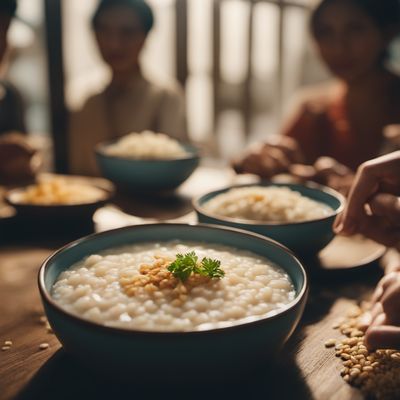
Babor
Rice porridge
Babor is a traditional dish from Algeria that is made from semolina flour. It is a hearty and flavorful dish that is often served for breakfast or...

Couscous (dish)
Couscous
Couscous is a traditional North African dish made from small steamed balls of semolina. It is a staple food in many countries in the region and is...
More Korean cuisine dishes » Browse all

Dwaeji galbi
Marinated Pork Ribs
Dwaeji galbi is a traditional Korean dish that consists of marinated pork ribs that are grilled or roasted. The dish is typically served with a...
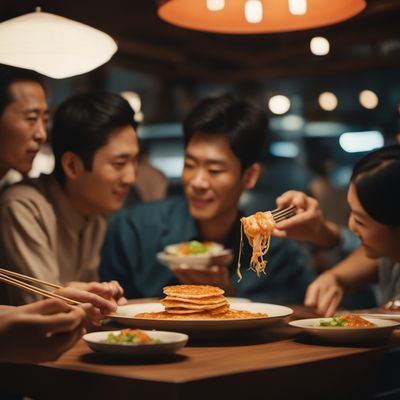
Saewoojeon
Shrimp Pancake
Saewoojeon is a popular Korean dish made with shrimp and vegetables. It is a savory and crispy pancake that is perfect as an appetizer or snack.

Janchi guksu
Banquet Noodles
Janchi guksu is a Korean noodle dish made with thin wheat noodles in a clear broth.


